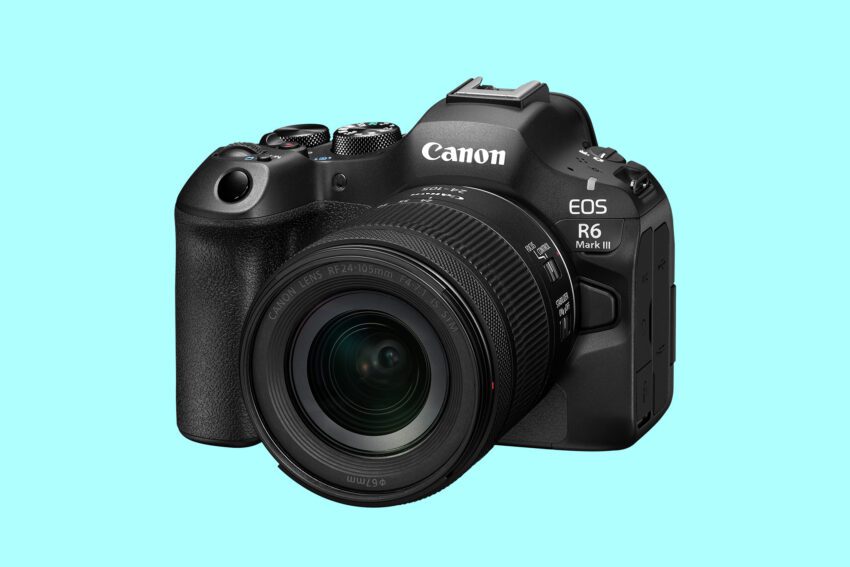
canon adds a 32-megapixel sensor and 7k Canon has officially unveiled the EOS R6 Mark III, a versatile full-frame mirrorless camera designed for both photography enthusiasts and videographers.
canon adds a 32-megapixel sensor and 7k
Key Features of the EOS R6 Mark III
The EOS R6 Mark III boasts a 32.5-megapixel sensor, an upgrade from the 24-megapixel sensor found in its predecessor, the R6 Mark II. This enhancement allows for greater detail and improved image quality, making it suitable for a variety of shooting conditions. The camera is also equipped with advanced autofocus capabilities, which include the ability to register a person’s face for prioritized tracking during continuous shooting. This feature is particularly beneficial for portrait and event photographers who need to ensure their subjects remain in focus.
Video Capabilities
One of the standout features of the R6 Mark III is its video recording capabilities. The camera supports up to 7K video recording at 60 frames per second (fps) in RAW format, as well as 4K recording at 120 fps. This level of performance is impressive for a camera in this price range and positions the R6 Mark III as a strong competitor in the mirrorless market. The inclusion of full corner-to-corner open gate filming allows for additional cropping flexibility, which is essential for filmmakers looking to achieve specific framing in post-production.
Moreover, Canon has introduced more gamma settings, including Canon’s Log 2 mode, which provides filmmakers with greater control over their footage during color grading. This is a significant advantage for those working in professional environments where color accuracy and dynamic range are crucial. The addition of a tally lamp, which indicates when the camera is recording, further enhances usability for video shooters, making it easier to confirm recording status from a distance.
Storage Solutions
In terms of storage, the R6 Mark III features a dual-card arrangement that includes one CFexpress Type B slot and one SD card slot. This asymmetrical setup marks a departure from the dual SD card slots found in the R6 Mark II. While the CFexpress Type B card offers faster write speeds, which is advantageous for high-resolution video and continuous shooting, it also presents potential challenges for users. CFexpress cards are generally more expensive than standard SD cards, and managing two different card formats can be cumbersome for photographers and videographers alike.
Despite these challenges, the benefits of the CFexpress Type B slot are evident. The R6 Mark III can maintain the same impressive shooting speeds as its predecessor—12 fps with the mechanical shutter and 40 fps with the electronic shutter—while handling longer bursts of images at the higher resolution. This capability is particularly appealing for sports and wildlife photographers who require rapid-fire shooting to capture fast-moving subjects.
Pricing and Availability
The EOS R6 Mark III is set to launch on November 25th, with a body-only price of $2,799. For those looking to bundle the camera with a lens, Canon offers two kit options: the RF 24-105mm STM lens for $3,149 and the RF 24-105mm L lens for $4,049. This pricing strategy positions the R6 Mark III as an attractive option for those who may find the higher-end EOS R5 Mark II, priced well over $4,000 for the body alone, to be out of reach.
New Lens Offering: RF 45mm f/1.2 STM
Alongside the EOS R6 Mark III, Canon has introduced the RF 45mm f/1.2 STM lens. This compact standard prime lens features a bright maximum aperture of f/1.2, making it ideal for low-light photography and achieving a shallow depth of field. Priced at $469.99, this lens is one of the most affordable f/1.2 options available on the market, especially when compared to other full-frame-compatible lenses that typically exceed $1,500.
While the RF 45mm f/1.2 STM lens is not classified as an L lens and lacks weather sealing, its price point and performance make it an appealing choice for photographers looking for high-quality optics without breaking the bank. However, potential buyers should note that an additional $59.99 is required for a lens hood, which is often considered an essential accessory for protecting the lens and improving image quality in certain lighting conditions.
Performance Considerations
During a briefing, Canon USA representative Drew MacCallum acknowledged that the RF 45mm f/1.2 STM lens may not meet the expectations of the most discerning photographers, particularly those who prioritize pixel-perfect quality. The lens relies on some in-camera corrections to enhance its image rendering, which is a common practice among budget-friendly lenses. Nevertheless, the introduction of an affordable f/1.2 lens could signal a shift in the market, encouraging other manufacturers to follow suit and produce similarly priced options.
Market Position and Implications
The EOS R6 Mark III is strategically positioned to appeal to a broader range of users, particularly those who may not require the high-resolution capabilities of the EOS R5 Mark II. By offering a well-rounded camera with enhanced features at a more accessible price point, Canon aims to attract both amateur and professional photographers who seek versatility without compromising on quality.
The camera’s improved specifications, including the higher megapixel count and advanced video capabilities, suggest that Canon is responding to the evolving needs of content creators. As video continues to gain prominence in the photography world, the ability to shoot high-quality video alongside still images is becoming increasingly important. The R6 Mark III’s features cater to this trend, making it a compelling option for hybrid shooters.
Stakeholder Reactions
Initial reactions from industry experts and potential users have been largely positive. Many have praised Canon for addressing the needs of videographers with the inclusion of advanced video features and improved autofocus. However, some concerns have been raised regarding the dual-card setup, with users expressing a preference for dual SD card slots for ease of use and cost-effectiveness.
Overall, the EOS R6 Mark III appears to be a significant step forward for Canon in the mirrorless camera market. Its combination of high-resolution stills, advanced video capabilities, and competitive pricing positions it as a strong contender among its peers. As the camera becomes available for purchase, it will be interesting to see how it performs in real-world scenarios and how it is received by the photography and videography communities.
Conclusion
In summary, the Canon EOS R6 Mark III represents a notable advancement in the company’s mirrorless camera lineup. With its 32.5-megapixel sensor, enhanced video capabilities, and new lens offerings, it is poised to meet the demands of a diverse audience. As the launch date approaches, anticipation builds around how this camera will perform in various shooting environments and its potential impact on the market.
Source: Original report
Was this helpful?
Last Modified: November 6, 2025 at 11:36 am
1 views















